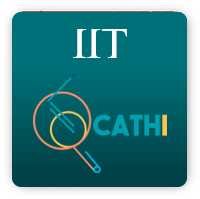Self-Learning Geometric Transformations: A Framework for the “Before and After” Style of Exercises
After the long period of mandatory distance learning, either synchronous or asynchronous, caused by the COVID-19 pandemic, the existence of learning tools to support students in similar scenarios is welcomed in many curriculum subjects. Geometric transformations are relevant in mathematics and an om...
Saved in:
| 主要作者: | |
|---|---|
| 其他作者: | , |
| 格式: | Artículo |
| 語言: | English |
| 出版: |
2022
|
| 主題: | |
| 在線閱讀: | https://doi.org/10.3390/math10111859 https://www.mdpi.com/2227-7390/10/11/1859/htm |
| 標簽: |
添加標簽
沒有標簽, 成為第一個標記此記錄!
|
| 總結: | After the long period of mandatory distance learning, either synchronous or asynchronous, caused by the COVID-19 pandemic, the existence of learning tools to support students in similar scenarios is welcomed in many curriculum subjects. Geometric transformations are relevant in mathematics and an omnipresent topic in the computer graphics curriculum that needs plenty of visual tools and learning-by-doing environments. In this work, we propose a framework based on an extended Translation-Rotation-Scale (TRS) pattern to generate composite transformations to support a specific style of learning exercises that we call “before and after”. The pattern, together with specific constraints to reduce the domain into a finite set of cases, allows the automatic exercises generation, evaluation, and real-time feedback. Two pieces of software, called GTVisualizer and GTCards, were developed to empirically test the proposed framework embedding it in a gaming environment. The first tool supports the initial instruction and introduces the formal matrix-based methodology to specify composite transformations; the second one provides a ludic environment where students can drill and reinforce the subject by playing. Our initial results suggest that these tools are suitable for learning geometric transformations; they helped students in simulated self-study mode achieve comparable results to those students receiving the regular lecture materials and explanations in the classroom. Moreover, the usage of the tools appears to favor a similar increasing effect on students’ visual-spatial abilities, similar to the obtained by taking an in-person course on computer graphics, as measured with the Purdue Spatial Visualization Test. |
|---|
